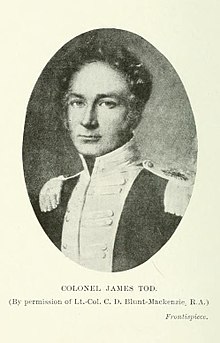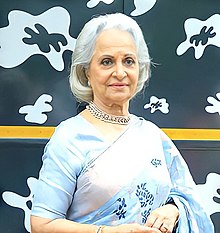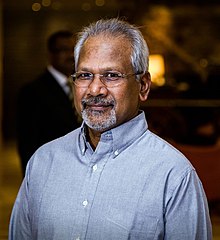Portal:India
Introduction


India, officially the Republic of India (ISO: Bhārat Gaṇarājya), is a country in South Asia. It is the seventh-largest country by area; the most populous country as of June 2023; and from the time of its independence in 1947, the world's most populous democracy. Bounded by the Indian Ocean on the south, the Arabian Sea on the southwest, and the Bay of Bengal on the southeast, it shares land borders with Pakistan to the west; China, Nepal, and Bhutan to the north; and Bangladesh and Myanmar to the east. In the Indian Ocean, India is in the vicinity of Sri Lanka and the Maldives; its Andaman and Nicobar Islands share a maritime border with Thailand, Myanmar, and Indonesia. (Full article...)
Selected pictures
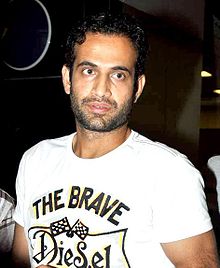
Irfan Pathan (pronunciation; born 27 October 1984) is a former Indian cricketer turned commentator and analyst. He was a bowling all-rounder and a member of the Indian cricket team that won the inaugural 2007 ICC Twenty20 World Cup and 2013 ICC Champions Trophy.
Beginning his career as a fast-medium swing and seam bowler, Pathan broke into the national team soon after turning 19, and evoked comparisons with Pakistan's Wasim Akram with his promising performances and prodigious swing. In early 2006, Pathan became the only bowler to take a Test hat-trick in the first over of the match (vs Pakistan at Karachi). However, the productive run did not last and after the start of 2006, Pathan began to steadily lose pace and swing, and his wicket-taking dwindled. Although Pathan's batting continued to be productive, he was not regarded as a specialist and was dropped from the team in both Tests and ODIs by the end of 2006, and by 2007 was no longer in the squad until his return in the 2007 World Twenty20. (Full article...)
The book's rights were bought after his production venture Chaudhvin Ka Chand (1960) became commercially successful and covered his company's loss following the failure of Kaagaz Ke Phool (1959), his previous directorial project. Mitra and Alvi took a year to write the screenplay, facing difficulties in translating the novel from Bengali to Hindi. Principal photography took place in Andheri and Dhanyakuria with cinematographer V. K. Murthy; the film was edited by Y. G. Chawhan. Hemant Kumar composed the soundtrack and Shakeel Badayuni wrote the lyrics. (Full article...)
IIM Rohtak was established in the year 2010 as one of the six new IIMs announced under the 11th Five Year Plan. It offers mainly five courses, an Integrated Programs in Management (IPM), Integrated Program in Law (IPL), the Post-Graduate Program (PGP) in Management, Executive Post Graduate Program for Executives (EPGPX) and Doctoral Program in Management (DPM). (Full article...)
The project, which marked the beginning of a collaboration between Vijay and Murugadoss, was reported in July 2011, and the film's title was formally announced on the same year in December. Principal photography commenced in January 2012 and ended that October. Filming mostly took place in Mumbai, except for two song sequences which were taken in Bangkok and Switzerland respectively. The film's soundtrack was composed by Harris Jayaraj with cinematography handled primarily by Santosh Sivan and editing by A. Sreekar Prasad. (Full article...)

The British Asian Cup was a day/night Twenty20 cricket charity match played between the 2008 Indian Premier League (IPL) champion Rajasthan Royals and the 2008 Twenty20 Cup champion Middlesex Panthers played at the Lord's Cricket Ground, London, England. A portion of the earnings of the match went to the British Asian Trust. It ended as the Royals defeated the Panthers by 46 runs.
Shaun Udal and Shane Warne were the captains for the Panthers and the Royals respectively. The Royals played a warm-up game with the Middlesex Second XI before the match, and won it by 28 runs. The match attracted a crowd of 20,000 people, but was delayed due to rain. (Full article...)
Following the local extinction, various studies were done and multiple plans have been made to re-introduce cheetahs back into the wild in India. This included initial plan to re-introduce the asiatic cheetah from Iran in the 1970s, which was shelved due to political instability in Iran and the dwindling population of the species in the existent range. Since the late 1980s, further plans were made to introduce members of related sub-species Southeast African cheetah (Acinonyx jubatus jubatus). In 2022, as a part of Project Cheetah, cheetahs flown in from Namibia and South Africa were introduced to Kuno National Park in India. (Full article...)
Hum Aapke Dil Mein Rehte Hain serves as a remake of Telugu-language film Pavitra Bandham (1996). With a budget of ₹62.5 million (US$750,000), principal photography took place in India and Switzerland and finished in December 1998. Kabir Lal served as the cinematographer, while E.M. Madhavan, Chaitanya Tanna and Marthand K. Venkatesh edited the film. The music was composed by Anu Malik and the lyrics were written by Sameer. (Full article...)

The Manipuri Pony (Meitei: Meitei Sagol) is a traditional Indian breed of small horse or pony from Assam and Manipur in north-eastern India. It appears both in the history and the mythology of Manipur, and was used for warfare and polo. It is believed to have been the polo pony in use in Assam in the mid-nineteenth century when British tea planters first saw polo being played, and the height limits set for polo ponies were based on ponies of this breed. It was very numerous in the early twentieth century, but numbers have since fallen. A breed society was established in 1977, and a breed standard was drawn up by the Indigenous Horse Society of India in 2009. (Full article...)
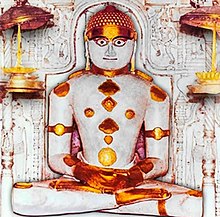
Rishabhanatha (Devanagari: ऋषभनाथ), also Rishabhadeva (Devanagari: ऋषभदेव, Ṛṣabhadeva), Rishabha (Devanagari: ऋषभ, Ṛṣabha) or Ikshvaku (Devanagari: इक्ष्वाकु, Ikṣvāku), is the first tirthankara (Supreme preacher) of Jainism. He was the first of twenty-four teachers in the present half-cycle of time in Jain cosmology, and called a "ford maker" because his teachings helped one cross the sea of interminable rebirths and deaths. The legends depict him as having lived millions of years ago. He was the spiritual successor of Sampratti Bhagwan, the last Tirthankara of previous time cycle. He is also known as Ādinātha (lit. "first Lord"), as well as Adishvara (first Jina), Yugadideva (first deva of the yuga), Prathamarajeshwara (first God-king) and Nabheya (son of Nabhi). He is also known as Ikshvaku, establisher of the Ikshvaku dynasty. Along with Mahavira, Parshvanath, Neminath, and Shantinath, Rishabhanatha is one of the five Tirthankaras that attract the most devotional worship among the Jains.
According to traditional accounts, he was born to king Nabhi and queen Marudevi in the north Indian city of Ayodhya, also called Vinita. He had two wives, Sumangalā and Sunandā. Sumangalā is described as the mother of his ninety-nine sons (including Bharata) and one daughter, Brahmi. Sunandā is depicted as the mother of Bahubali and Sundari. The sudden death of Nilanjana, one of the dancers sent by Indra in his courtroom, reminded him of the world's transitory nature, and he developed a desire for renunciation. (Full article...)
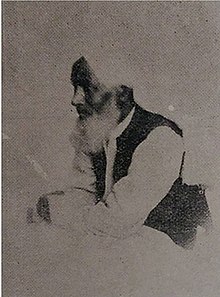
Mahmud Hasan Deobandi (also known as Shaykh al-Hind; 1851–1920) was an Indian Muslim scholar and an activist of the Indian independence movement, who co-founded the Jamia Millia Islamia University and launched the Silk Letter Movement for the freedom of India. He was the first student to study at the Darul Uloom Deoband seminary. His teachers included Muhammad Qasim Nanawtawi and Mahmud Deobandi, and he was authorized in Sufism by Imdadullah Muhajir Makki and Rashid Ahmad Gangohi.
Hasan served as the principal of the Darul Uloom Deoband and founded organisations such as the Jamiatul Ansar and the Nizaratul Maarif. He wrote a translation of the Quran in Urdu and authored books such as Adilla-e-Kāmilah, Īzah al-adillah, Ahsan al-Qirā and Juhd al-Muqill. He taught hadith at the Darul Uloom Deoband and copyedited the Sunan Abu Dawud. His major students included Ashraf Ali Thanwi, Anwar Shah Kashmiri, Hussain Ahmad Madani, Kifayatullah Dehlawi, Sanaullah Amritsari and Ubaidullah Sindhi. (Full article...)
Reddy wanted to make a film based on Krishnadevaraya's character ever since his visit to Hampi for the filming of his debut film Vandemataram (1939). He employed Devulapalli Krishnasastri to write the film's script and took inspiration from Buchibabu's play "Rayalavari Karunakruthyamu" and Devan Sharar's short story "The Emperor and the Slave Girl". He also incorporated into the script a few incidents from his childhood for the pranks between Nagaraju and Mallishwari. S. Rajeswara Rao composed the film's music, Adi M. Irani and B. N. Konda Reddy provided the cinematography, H. R. Narayana and Vasu edited the film, and A. K. Shekhar was the film's production designer. (Full article...)
Shot primarily in New Delhi, Rang De Basanti was released globally on 26 January 2006. Upon release, the film broke all opening box office records in India, becoming the country's highest-grossing film in its opening weekend and holding the highest opening-day collections for a Hindi film. It received critical acclaim, winning the National Film Award for Best Popular Film, and being nominated for Best Foreign Language Film at the 2007 BAFTA Awards. The film was chosen as India's official entry for the Golden Globe Awards and the Academy Awards in the Best Foreign Language Film category, though it did not ultimately yield a nomination for either award. A. R. Rahman's soundtrack, which earned positive reviews, had two of its tracks considered for an Academy Award nomination. (Full article...)
Kohli conceived Teri Meri Kahaani from the idea of soulmates, showing the strength of love beyond generations by having the same two actors portray all three couples without using a reincarnation theme. He co-wrote the film with Robin Bhatt. Muneesh Sappel created three sets for depicting the different time periods, requiring months of research and detailed designs. Principal photography began in Mumbai in mid-2011 and later moved to London, where it was primarily shot at the Jubilee Campus of the University of Nottingham and Stratford-upon-Avon. (Full article...)

The Padma Bhushan is the third-highest civilian award in the Republic of India, preceded by the Bharat Ratna and the Padma Vibhushan and followed by the Padma Shri. Instituted on 2 January 1954, the award is given for "distinguished service of a high order...without distinction of race, occupation, position or sex." The award criteria include "service in any field including service rendered by Government servants" including doctors and scientists, but exclude those working with the public sector undertakings. , the award has been bestowed on 1270 individuals, including twenty-four posthumous and ninety-seven non-citizen recipients.
The Padma Awards Committee is constituted every year by the Prime Minister of India and the recommendations for the award are submitted between 1 May and 15 September. The recommendations are received from all the state and the union territory governments, as well as from Ministries of the Government of India, Bharat Ratna and Padma Vibhushan awardees, the Institutes of Excellence, Ministers, Chief Ministers and Governors of States, Members of Parliament, and private individuals. The committee later submits their recommendations to the Prime Minister and the President of India for further approval. The award recipients are announced on 26 January, the Republic Day of India. (Full article...)
Rajasaurus (meaning "King lizard") is a genus of carnivorous abelisaurid theropod dinosaur from the Late Cretaceous of India, containing one species: Rajasaurus narmadensis. The bones were excavated from the Lameta Formation in the Gujarat state of Western India, probably inhabiting what is now the Narmada River Valley. It was formally described by palaeontologist Jeffrey A. Wilson and colleagues in 2003 based on a partial skeleton comprising the braincase, spine, hip bone, legs, and tail–a first for an Indian theropod. The dinosaur likely measured 6.6 metres (22 ft), and had a single horn on the forehead which was probably used for display and head-butting. Like other abelisaurids, Rajasaurus was probably an ambush predator.
India at this time was an island, due to the break-up of the supercontinent Gondwana, though it is possible animals still were able to migrate to and from nearby continents. The creation of the subfamily Majungasaurinae, and its inclusion of abelisaurids from India, Madagascar, and Europe–including Rajasaurus–further reiterates this. The Lameta Formation has yielded several other dinosaur species, including abelisaurids and titanosaurian sauropods, similar to other Gondwanan landmasses. The area during the Cretaceous was probably forested, and served as nesting grounds for several creatures. (Full article...)
Kumari Mayawati (born Kumari Mayawati Das; 15 January 1956) is an Indian politician who served as the 18th Chief Minister of Uttar Pradesh from 1995 to 1995, 1997 to 1997, 2002 to 2003 and from 2007 to 2012. She is the national president of the Bahujan Samaj Party (BSP), which focuses on a platform of social change for Bahujans, more commonly known as Other Backward Castes, Scheduled Castes and Scheduled Tribes as well as religious minorities since 2003. She had also served as a Member of Parliament, Rajya Sabha from 2012 to 2017 from Uttar Pradesh. Mayawati's rise from humble beginnings has been called a "miracle of democracy" by P. V. Narasimha Rao, former prime minister of India. In 1993, Kanshi Ram formed a coalition with the Samajwadi Party and Mayawati became the Chief Minister of Uttar Pradesh in 1995. She was the first female Scheduled Caste chief minister in India. In 1997 and in 2002 she was chief minister with outside support from the Bharatiya Janata Party (BJP), the second time only for a year up to 26 August 2003 due to BJP withdrawing support.
Mayawati's tenure has attracted praise and criticism. Millions of Dalits across India popularly view her as an icon, and refer to her as Behen-ji (elder sister). She has been praised for her fundraising efforts on behalf of her party and her birthdays have been widely celebrated by her supporters. On the contrary, the rise in her personal wealth and that of her party have been criticised as indicative of corruption. (Full article...)
Maheshinte Prathikaaram's development began in 2013, when Pothan was working as an associate director for Abu (who was directing Idukki Gold, co-written by Pushkaran). Pushkaran suggested a story idea to Pothan which was based on an incident in his native village. At Pothan's insistence, Pushkaran wrote the screenplay that year and Abu later became interested in producing the film. Production was scheduled to commence from December 2014 after completing the casting process but, due to scheduling conflicts, it was postponed to August 2015. Principal photography began in early August in Idukki and nearby locations, where it was predominantly filmed. Shooting was completed in late October. (Full article...)
News
- 2 July 2024 – 2024 Hathras stampede
- At least 116 people are killed in a stampede at a religious gathering in Hathras, Uttar Pradesh, India. (Hindustan Times)
- 29 June 2024 –
- Five Indian soldiers are killed in Ladakh, India, after their tank sinks in abruptly increased water levels in the Shyok River during a military exercise. (AP)
- 28 June 2024 –
- A roof at the Indira Gandhi International Airport in New Delhi, India, collapses amid heavy rains killing one person, injuring eight others, and leading to the cancellation of some domestic flights. (Reuters)
- 22 June 2024 – 2024 Tamil Nadu alcohol poisoning
- The death toll from the tainted liquor incident in Kallakurichi district, Tamil Nadu, India, increases to 54. (Al Jazeera)
- 21 June 2024 –
- A court in Geneva, Switzerland, sentences Indian-born billionaire Prakash Hinduja and three of his family members to four years in prison for exploiting domestic workers at their villa in Cologny. (AP)
Did you know...
- ... that the colonial enslavement of American Indians is described as a cultural genocide?
- ... that the only person killed by the 2004 Indian Ocean tsunami on the island of Socotra was a seven-year-old in Qulensya?
- ... that Hindu religious leader Siddeshwar Swami declined the Padma Shri, India's fourth-highest civilian honor?
- ... that the Indian politician Diwan Chaman Lall failed to get rid of the painting Nude of Indira?
- ... that Chicago Radio public address systems were used extensively by the pro-independence Indian National Congress during the British Raj?
- ... that besides official retreats in Hyderabad and in Shimla, the president of India also has one in Dehradun?
Timeline of Indian history, Indus Valley Civilisation, Dholavira, Science and technology in ancient India, Meluhha, Aryan invasion theory, Out of India theory, Greek conquests in India, Indian maritime history, Maurya Empire, Ashoka, Shunga Empire, Hoysala Empire, Vijayanagara, Satavahana dynasty, Indo-Greek Kingdom, Indo-Scythians, Indo-Parthian Kingdom, Kushan Empire, Western Satraps, Gupta Empire, Chola dynasty, Pala Empire, Islamic incursions in India, Mughal Empire, Maratha Empire, British Raj, East India Company, Governor-General, Viceroy, War of Independence, 1857, Indian independence movement, Indian National Army, Azad Hind, Quit India Movement, Partition of India, History of Republic of India, Non-Aligned Movement, Sino-Indian War, Indo-Pakistani War of 1947–1948, Indo-Pakistani War of 1965, Indo-Pakistani War of 1971, Kargil War, 2001–02 India–Pakistan standoff, Military, Demographic
Law, Hindu law, Constitution, Political parties (Indian National Congress, Bharatiya Janata Party), Foreign relations, Elections, Political divisions, Reservation in India
Government agencies, Legislative branch (Lok Sabha, Rajya Sabha) Executive branch (President & Vice President, Prime Minister & Deputy Prime Minister, Cabinet Ministers, Cabinet Secretary, Election Commission, Foreign Minister; Law enforcement: CBI, CID, Intelligence: IB, RAW), Directorate General of Income Tax Investigation Judicial branch (Supreme Court), Armed Forces (Army, Navy, Air Force, Border Security Force, Coast Guard)
Himalayas, Western Ghats, Eastern Ghats, Indo-Gangetic Plain, Deccan Plateau, Thar Desert, Ganges, Rann of Kutch, Brahmaputra River, Northeast India; Mountains, Valleys, Islands, Rivers; States and union territories, Cities, Districts, Regions, Fauna, Flora
Rupee, Bombay Stock Exchange, National Stock Exchange, Standard of living, Companies, Reserve Bank of India, Energy policy (Solar, Wind, Nuclear), Tourism, Transport (Expressways, Rail transport, Auto rickshaw),
Languages, Standard of living, Religion
Music (Carnatic, Hindustani, Indi-pop), Dance, Languages, Literature, Architecture, Film & TV, Cuisine, Holidays, Folklore, Education, Media, Indian martial arts
Indian Council of Agricultural Research (ICAR), Indian Institute of Astrophysics, National Centre for Software Technology, AIIMS, IISc, IIT, NIT, BITS-Pilani, INRegistry, Indian numbering system, Indian Space Research Organisation, National Internet Exchange of India, ICRISAT, International Institute of Information Technology, Hyderabad
Indian English, Indian nationality law, Numbering system, Indian Space Research Organisation, Telecommunications, National Highways Development Project, Flag, Vehicle registration plates, Indian nationalism, Metrication in India
Categories
Related portals
Religions in India
Indian Subcontinent
Other countries
Wikipedias in Indian languages
- অসমীয়া (Assamese)
- বাংলা (Bengali)
- भोजपुरी (Bhojpuri)
- বিষ্ণুপ্রিয়া মণিপুরী (Bishnupriya Manipuri)
- गोंयची कोंकणी / Gõychi Konknni (Konkani)
- ગુજરાતી (Gujarati)
- हिन्दी (Hindi)
- ಕನ್ನಡ (Kannada)
- कॉशुर/كشميري (Kashmiri)
- मैथिली (Maithili)
- മലയാളം (Malayalam)
- मराठी (Marathi)
- नेपाली (Nepali)
- नेपाल भाषा
- (Newari)
- ଓଡ଼ିଆ (Odiya)
- ਪੰਜਾਬੀ (Punjabi)
- पालि (Pali)
- संस्कृत (Sanskrit)
- ᱥᱟᱱᱛᱟᱲᱤ (Santali)
- سنڌي (Sindhi)
- தமிழ் (Tamil)
- తెలుగు (Telugu)
- ತುಳು (Tulu)
- اردو (Urdu)
Associated Wikimedia
The following Wikimedia Foundation sister projects provide more on this subject:
-
Commons
Free media repository -
Wikibooks
Free textbooks and manuals -
Wikidata
Free knowledge base -
Wikinews
Free-content news -
Wikiquote
Collection of quotations -
Wikisource
Free-content library -
Wikiversity
Free learning tools -
Wikivoyage
Free travel guide -
Wiktionary
Dictionary and thesaurus
Cite error: There are <ref group=lower-alpha> tags or {{efn}} templates on this page, but the references will not show without a {{reflist|group=lower-alpha}} template or {{notelist}} template (see the help page).


![Image 1 Andha Naal (pronounced [an̪da naːɭ] transl. That Day) is a 1954 Indian Tamil-language mystery-thriller film, produced by A. V. Meiyappan and directed by S. Balachander. It is the first film noir in Tamil cinema, and the first Tamil film to be made without songs, dance, or stunt sequences. Set in the milieu of World War II, the story is about the killing of a radio engineer Rajan (Sivaji Ganesan). The suspects are Rajan's wife Usha (Pandari Bai), the neighbour Chinnaiya Pillai (P. D. Sambandam), Rajan's brother Pattabi (T. K. Balachandran), Rajan's sister-in-law Hema (Menaka), and Rajan's mistress Ambujam (K. Sooryakala). Each one's account of the incident points to a new suspect. Balachander watched Akira Kurosawa's Rashomon (1950) at a film festival, was inspired by it and wrote a play in the same narrative style, but the script was rejected by All India Radio; Meiyappan later agreed to produce it as the film that would later be titled Andha Naal under AVM Productions. The screenplay was written by Javar Seetharaman, who also played a prominent role as an investigative officer in the film. The cinematography was handled by S. Maruti Rao, and the background score was composed by AVM's own music troupe, Saraswathy Stores Orchestra. The film was shorter than most contemporaneous Tamil films. It was the only film directed by Balachander for AVM. (Full article...)](http://upload.wikimedia.org/wikipedia/en/d/d2/Blank.png)





